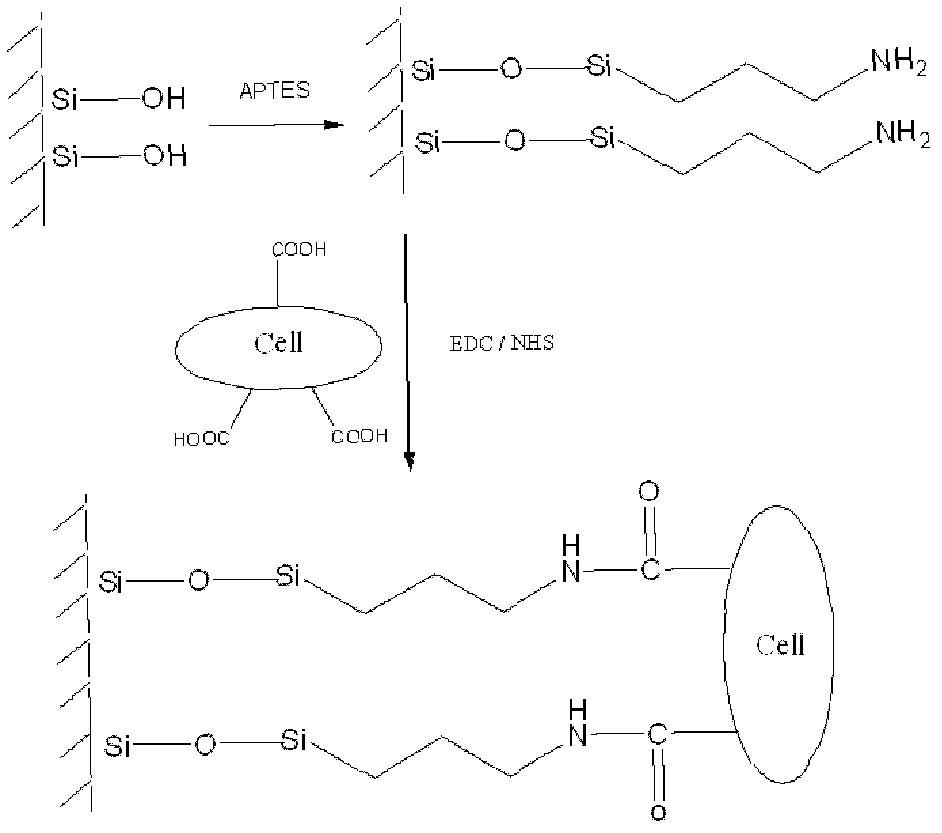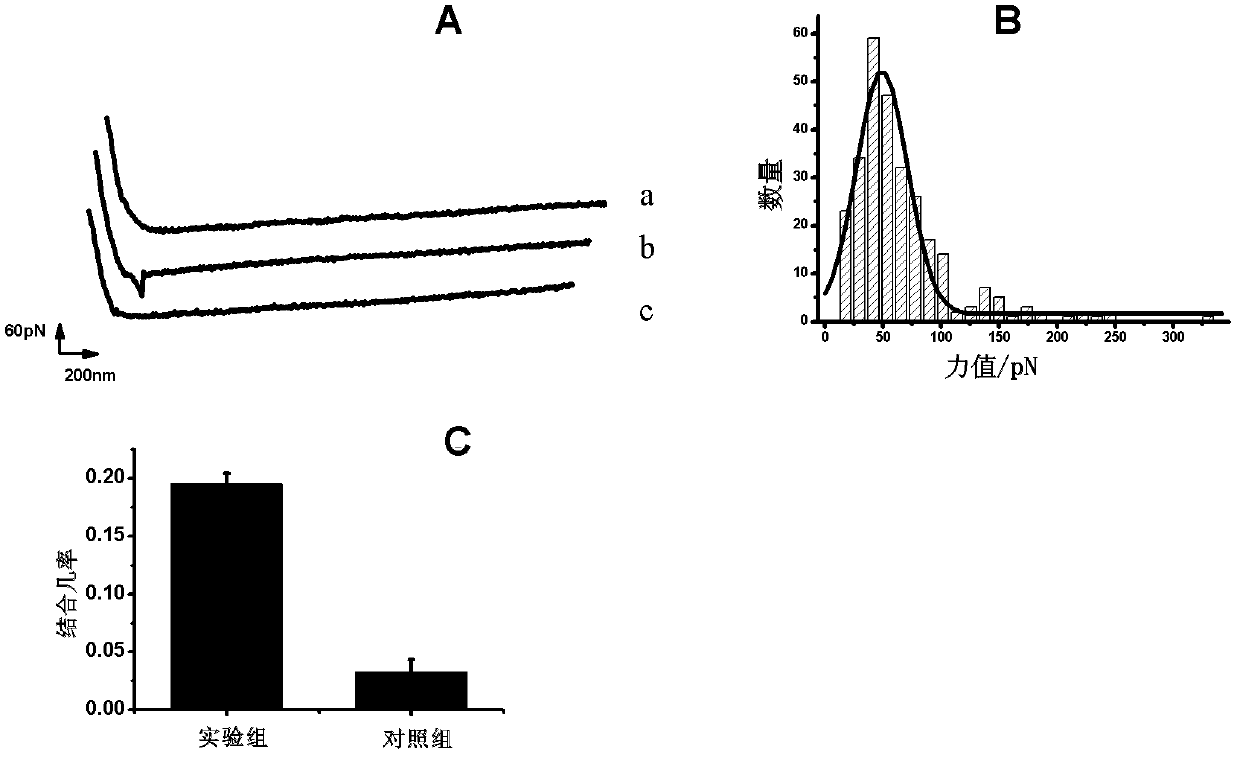Immobilized modification method for plant suspension cells
A technique for suspending cells and plants, which is applied in biochemical equipment and methods, determination/inspection of microorganisms, immobilization on or in inorganic carriers, etc. status, etc.
- Summary
- Abstract
- Description
- Claims
- Application Information
AI Technical Summary
Problems solved by technology
Method used
Image
Examples
Embodiment 1
[0061] Example 1. Obtainment and application of plant suspension cells fixed and cross-linked to the substrate
[0062] 1. Obtaining plant suspension cells immobilized and cross-linked to the substrate
[0063] 1. Activate plant cells and activate substrate materials
[0064] 1) Activate plant suspension cells
[0065] (1) Take 1 ml of tobacco suspension cells (Nicotiana tobaccocum L. cv. Bright Yellow, BY-2) in good growth state, and add it to an Erlenmeyer flask containing 20 ml of medium. Protected from light and placed in a shaker at 26°C with a rotation speed of 120rpm, cultured for 3 days to obtain a BY-2 cell solution (which can be used as a growing BY-2 cell for later experiments, wherein the concentration of BY-2 cells is 2.36×10 3 pieces / ml.
[0066] (2) Take 4ml of BY-2 cells in step (1), transfer to a 15ml centrifuge tube, let it settle to remove the supernatant, then add 2ml of culture medium, gently pipette evenly, and transfer to a 60mm culture dish; Then we...
Embodiment 2
[0093] Example 2, the acquisition of plant suspension cell protoplasts fixed to the substrate by cross-linking
[0094] According to the same method and steps as 1-2 of step 1 of Example 1, the plant suspension cells were immobilized and modified, and only the BY-2 cells used were replaced with the protoplasts of BY-2 cells to obtain the fixed on the glass. BY-2 protoplasts (glass slides immobilized with BY-2 protoplasts).
[0095] The BY-2 protoplasts fixed on the glass (glass slides with BY-2 protoplasts fixed) were detected in step 1 of Example 1, and the normal growing protoplasts were used as contrast;
[0096] The result is as Figure 4 As shown, A, B, and C are BY-2 protoplasts growing in suspension, and D, E, and F are images of BY-2 protoplasts fixed on glass. Among them, A and D are the bright field images of the negative control, B and E are the fluorescence images stained by FDA, and C and F are the superimposed images of the bright field images and the fluoresce...
PUM
| Property | Measurement | Unit |
|---|---|---|
| radius | aaaaa | aaaaa |
Abstract
Description
Claims
Application Information
 Login to View More
Login to View More - R&D
- Intellectual Property
- Life Sciences
- Materials
- Tech Scout
- Unparalleled Data Quality
- Higher Quality Content
- 60% Fewer Hallucinations
Browse by: Latest US Patents, China's latest patents, Technical Efficacy Thesaurus, Application Domain, Technology Topic, Popular Technical Reports.
© 2025 PatSnap. All rights reserved.Legal|Privacy policy|Modern Slavery Act Transparency Statement|Sitemap|About US| Contact US: help@patsnap.com



